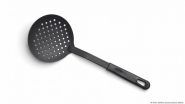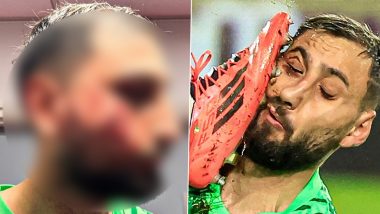New Delhi, Jun 3 (PTI) Saregama on Wednesday announced a global deal with Facebook to license its music for video and other social experiences across Facebook and Instagram.
This partnership will allow users to choose from a wide variety of music to add to their social experiences such as videos, stories via music stickers and other creative content, a statement said.
Also Read | Facebook & Instagram Users Can Now Include Music to Their Posts & Stories From Saregama.
Users will also be able to add songs to their Facebook profile, it added.
"...Now millions of Facebook users will be able to add music from our vast catalogue to stories and videos they create and share," Saregama India Managing Director Vikram Mehra said.
Also Read | Asus TUF A15, TUF A17 Gaming Laptops & New ROG Series Desktops Launched in India From Rs 60,990.
Saregama has a catalogue of over one lakh songs across many different genres including film songs, devotional music, ghazals and indipop in more than 25 languages.
Saregama will allow people, globally, to use their favourite retro Indian music to further enrich their content on our platforms, Manish Chopra, Director and Head of Partnerships at Facebook India, said. PTI SR ANS ANS 06031106 NNNN with patience and tactics and physicality. If you're a natural mover, as Nadal is on this surface, that's not something that has to come into your focus. If you're not ... it's so different from what you're used to playing on predominantly, a hard court, where your footing is secure,” said Jim Courier, a four-time major champion.
“Clay requires a bit of a different mindset. You have to be ready to hit that extra shot. You have to be ready to slide, dig in, play some defense.”
In the nearly 30 years since Courier's titles at Roland Garros in 1991-92, only one other French Open was won by an American man, Andre Agassi in 1999. More often it is someone from Europe — usually Nadal, of course — or South America, such as Gustavo Kuerten.
“I was lucky to be raised in Florida, where the bulk of the tournaments you play as a youngster are on the green clay,” Courier said. “So I learned how to slide at a very early age. For me it was very natural. I had no issues with it, no mental hang-up at all.”
Same for someone like Novak Djokovic, who has turned sliding on all surfaces into an art form.
Not so for those who came to clay later in life.
Monica Puig, the 2016 Olympic champion from Puerto Rico, laughed when asked whether sliding came easily.
“No. Not at all,” she said. “I remember falling all over the place.” “My first few coaches, we worked on it — even how not to get hurt when you're sliding,” Puig said, knocking on a table.
James Blake, a retired American player who reached No. 4 in the rankings, said he never felt comfortable with the kind of movement required for clay.
During a practice session in Rome in 2004, Blake tried sliding to reach a ball but his foot got caught and he slammed head-first into the net post, breaking his neck.
“I don't think,” Blake said, “that would have happened on another surface.” As for the proper technique, Blake said: “It's the sliding and the recovery. It's one thing to slide into it and execute that shot; it's getting back for the next ball for me was the most difficult. You watch Rafa and you watch Novak, and even Roger, and they do it so gracefully and so easily.”
One issue for Puig when she moved to clay courts: the wrong shoes.
Those for clay use a full herringbone pattern on the sole to stop the dirt from piling up, allowing for more traction — described by former top-10 member Roberto Bautista Agut as “a little more stick” — and smoother sliding.
Hard-court shoes usually have only partial herringbone treads and more cushioning, while grass-court shoes are entirely different, with cleat-like pimples on the bottom.
Today's pros use all three types of footwear.
The days of the surface specialists are over.
“Twenty, 30 years ago, the players played just on one surface. The Spanish guys never played on grass,” said Pablo Carreño Busta, a former top-10 player from Barcelona who has reached the U.S. Open semifinals and the French Open quarterfinals.
“Maybe one or two players hate to play on these courts,” he said in Paris last year, “but I think everybody knows how to do it. ... If you don't know how to do it, of course, it's worse.” AP
(This is an unedited and auto-generated story from Syndicated News feed, LatestLY Staff may not have modified or edited the content body)













 Quickly
Quickly





















